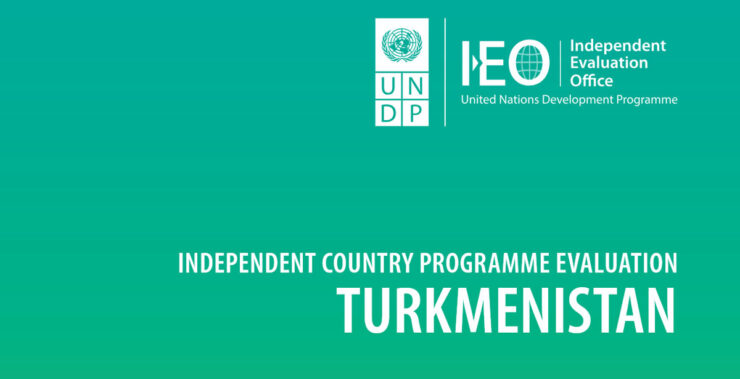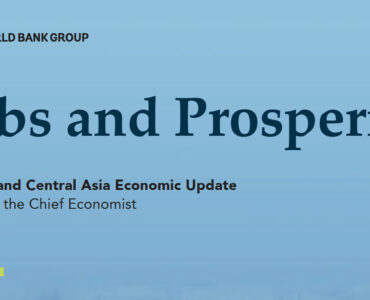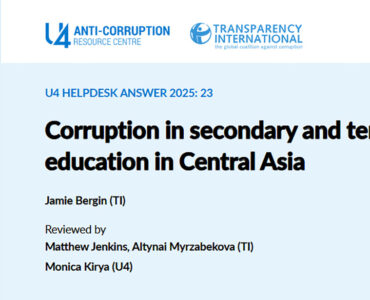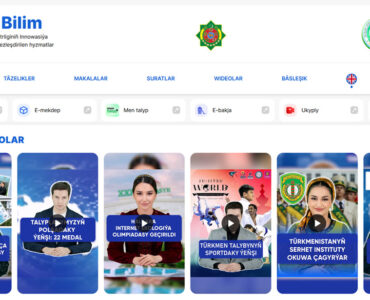The Independent Country Programme Evaluation Turkmenistan report by the Independent Evaluation Officehighlights several key findings related to the successful COVID-19 response in Turkmenistan, primarily through the efforts of the United Nations Development Programme (UNDP).
However, most of these findings are in contradiction with what Turkmen citizens experienced on the ground. Below is the summary of UNDP’s key achievements in supporting Turkmenistan’s COVID-19 response and the insights we have gathered from alternative sources such as Progres Foundation, International Partnership for Human Rights, CIVICUS, Voice of America, BBC News, Al Jazeera, Radio Free Europe Radio Liberty, Turkmen.news and Azatlyk Radiosy.
1. Diagnostic Capacity and Pandemic Preparedness
Independent Evaluation Office (IEO): UNDP successfully managed a $20 million World Bank COVID-19 loan, improved diagnostic infrastructure, trained 5,800 healthcare workers, upgraded 10 laboratories, and supported national pandemic plans.
Reality:
- Despite this funding, Turkmenistan has never officially acknowledged a single COVID-19 case or death as of 2025.
- As Catherine Smallwood, WHO senior emergencies officer said, “From the scientific point of view, it’s unlikely that the virus is not circulating in Turkmenistan”.
- The Ministry of Health has not published data on COVID-19 or related health statistics.
- Independent reports in July 2020 cited 8-12 daily deaths from pneumonia in Ashgabat alone.
- In July 2020, Kemal Uckun, a Turkish diplomat, died in Turkmenistan which the Turkish authorities later confirmed that he died from COVID-19. Authorities in Turkmenistan denied the diagnosis.
- Healthcare workers reportedly lacked protective equipment, had to make or buy their own masks, and some continued working while ill.
- There were reports of COVID-19 infections and deaths among at least ten doctors and claims that 25 thousand people died due to COVID.
2. Health Infrastructure and Lab Modernization
IEO: UNDP enhanced access to diagnostics, expanded medical equipment to rural areas, and initiated digital health tools and AI-powered diagnostics.
Reality:
- The report by IEO itself confirms that while infrastructure was upgraded in select hospitals, remote regions continued to face diagnostic shortages.
- There were not enough trained specialists to operate and maintain new lab equipment.
- High costs of non-communicable diseases (NCDs)medicines also limited accessibility.
3. Government Ownership and Transparency
IEO: The government showed ownership by scaling up pilot initiatives and integrating pandemic preparedness into national plans.
Reality:
Donate to support Turkmen analysts, researchers and writers to produce factual, constructive and progressive content in their efforts to educate the public of Turkmenistan.
SUPPORT OUR WORK- The virus was never publicly named; the government denied COVID-19’s existence throughout the pandemic.
- No epidemiological updates were shared with the public.
- Authorities detained and intimidated individuals for discussing COVID-19 and banned doctors from reporting or speaking about cases.
- State media discredited independent reporting and criticized external alerts, such as a US Embassy warning, calling it “fake news“.
4. WHO Mission and Public Measures
IEO: UNDP collaborated with WHO and UNICEF in improving preparedness, including during the WHO expert mission.
Reality:
- The government delayed the WHO mission and manipulated its visit by removing suspected COVID-19 patients from hospitals.
- The WHO expressed “extreme concern” over a rise in pneumonia cases and urged transparent testing and data sharing.
- Authorities used contradictory tactics, such as attributing illness to “dust” and recommending burning wild rue as a protective measure.
- Mass events continued, with forced participation, contradicting social distancing advice.
5. Social Protection and Support for Vulnerable Groups
IEO: UNDP supported vulnerable populations, delivered food and hygiene items to 5,000 families, and strengthened community-based services.
Reality:
- Pandemic restrictions worsened food shortages, triggering rare public protests, which were suppressed.
- Students returning from abroad struggled with distance learning due to the poor and expensive internet.
- Prisoners, including political detainees, were at heightened risk due to overcrowding and poor health conditions, with no effective medical support.
6. Awareness and Public Engagement
IEO: UNDP contributed to public health awareness, reducing stigma and improving community outreach.
Reality:
- The government discouraged public use of the term “Coronavirus”, initially banned face masks to avoid panic, and only reversed course during the WHO visit.
- Prevention messaging focused on climate-related justifications, not disease risk, and public compliance was inconsistently enforced.
- Meanwhile, no COVID-19 related statistics were not shared with the public and there were no public education and awareness raising campaigns to inform the public about the pandemic.
While the IEO report highlights UNDP’s logistical and technical contributions to Turkmenistan’s COVID-19 response, these do not align with on-the-ground realities. The government’s denial of the virus, lack of transparency, suppression of information, lack of public education and inconsistent public health measures undermine claims of effective pandemic management. International organizations, including UNDP and WHO, largely avoided confronting the government’s denial, thus failing to uphold accountability and human rights standards. No one knows the accurate number of people who died from COVID due to the government’s denial, secrecy and suppression of freedom and information.






